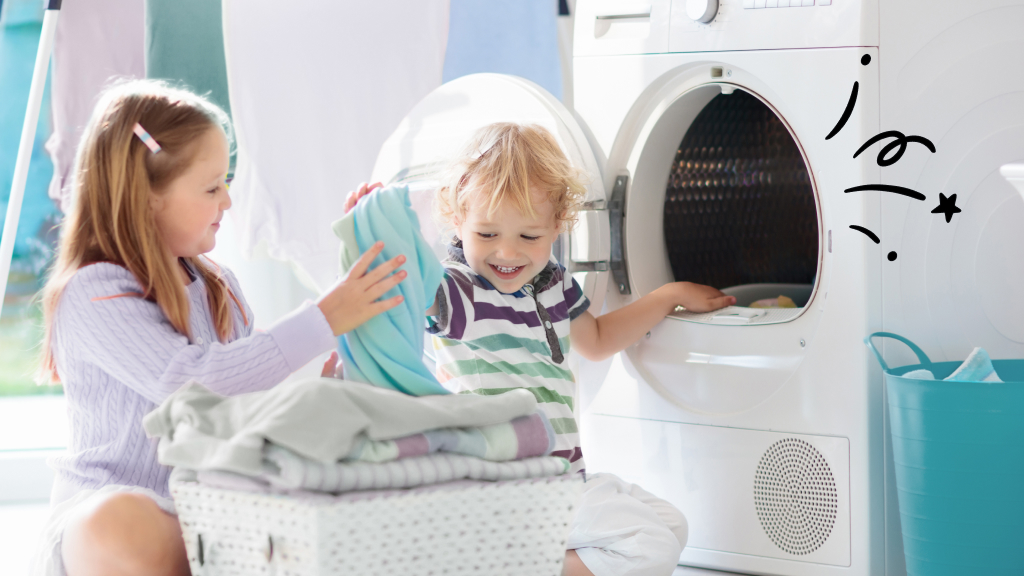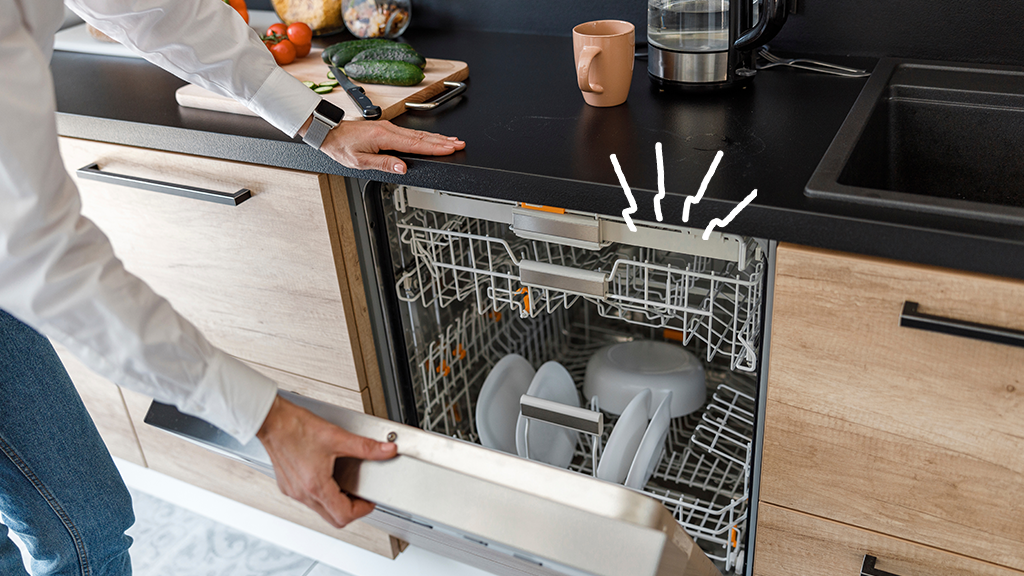Do you live in a small space where a big dryer won’t fit? Or maybe your landlord won’t let you cut a hole in the wall for a dryer vent. So, how will you dry your clothes? A ventless dryer might be the solution. Here’s what you need to know if you’re thinking of buying one.
How do ventless dryers work?
As the name suggests, ventless dryers work without an external vent that releases warm air from the machine to the outside. Instead, ventless dryers dry clothes by circulating heated air within the drum. Here are the two main categories of ventless dryers:
Condenser dryers
Like traditional vented models, a condenser dryer draws air from its surroundings and heats it to dry clothes. But instead of venting the warm, moist air out through a hose, the air passes through a heat exchanger, where it’s cooled and turns back into water. The system then reheats the water, which is collected in a tray (which you can dump out later), to continue the drying cycle.
Heat pump dryers
These highly efficient ventless dryers use a heat pump to generate warm air before circulating it through the machine’s drum to dry your clothes. The warm air passes through an evaporator, which condenses the moisture into water, and the dryer either pumps it out or drains it. The remaining dry air is reheated to finish the drying process.
Pros and cons of ventless dryers
What’s the best choice, a vented or ventless dryer? It depends on how often you do laundry, your budget, and space. Many Europeans who live in older, smaller buildings use ventless dryers, which are typically around half the size of vented models and don’t require a vent extending from the machine to the outside.
Most Americans use vented dryers, but more people in the U.S. are considering ventless dryers due to benefits like lower electric bills. Here are some ventless dryer pros and cons:
Ventless dryer pros
Thinking of buying a ventless dryer? There are good reasons to do so.
- Adaptability. These dryers can be installed in any room in your home, not just a separate laundry room. They take up less space and don’t have to be next to a hole in an exterior wall.
- Energy efficiency. Ventless dryers use less electricity than vented dryers because they recycle heated air rather than pulling it from the surrounding room.
- Simple setup. To install a ventless dryer, all you need is a power outlet and sufficient airflow around the machine.
- Less maintenance. With no vent to clean, ventless dryers require less maintenance than a vented unit.
- Clothing care. The smaller drum and lower heat volume in ventless models are gentler on fabrics, which helps your clothes last longer.
Ventless dryer cons
If you’re wondering, “What are the problems with ventless dryers?” Here’s what to consider:
- Capacity. Ventless dryers are typically smaller than vented models, so loads are smaller.
- Longer drying cycles. Drying takes longer—up to an hour and a half for a normal cycle—due to the process of cooling and reheating.
- Cost. Energy efficiency will save you money on your electric bill long term, but ventless dryers typically cost more than vented models. Condenser models average $1000, while heat pump dryers can cost $1600 or more.
- Humidity. In small spaces, the added moisture from a ventless dryer may lead to mold or mildew growth.
Are ventless dryers safe?
Is a dryer with no vent safe for your family? The answer is yes, if you follow manufacturer’s guidelines for installation. The systems in these models are designed to operate safely. Here’s why:
- Heat management. Ventless dryers typically use lower temperatures than vented dryers, which reduces the risk of fire.
- Moisture control. The mechanisms in this type of dryer are designed to condense or pump out moisture, so humidity doesn’t build up in the room. This, plus setting up the unit in a well-ventilated space, helps prevent mold and mildew growth.
- Automatic shutoff. Many ventless models, like their vented counterparts, come with an automatic shutoff feature so the dryer will stop when it senses the clothes are dry. This prevents overheating.
Maintaining a ventless dryer
If you decide a ventless dryer is right for you, we’ve got tips to help you take care of it.
- Avoid overloading. Keep your load size small for the best airflow and drying results and to prevent stress on your machine.
- Remove lint. Check and clean the lint filter regularly.
- Clean your machine. If you have a condenser dryer, clean your heat exchanger every 3 months or so to keep it working properly.
- Empty the water container. Prevent overflow and malfunctions in your condenser dryer by emptying your water tray as needed.
- Keep the air intake area clear. Prevent overheating and maintain proper airflow by ensuring the intake area on your heat pump dryer is clear.
- Protect it. Today’s appliances need more repairs—and costly ones at that. Protecting all of the eligible appliances in your home—both current and future purchases—with one simple plan like Asurion Appliance+ will help you to live life uninterrupted. Learn more about Asurion Appliance+ coverage today.





